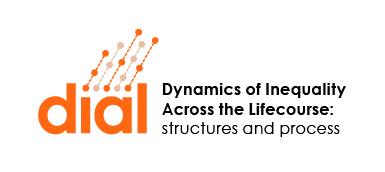This paper considers why, contrary to expectations, relationships between people with similar backgrounds, especially similar levels of education, hasn’t done more to increase income inequality.
It finds that what matters more for inequality is a combination of background characteristics and a consideration of who partners in the first place.
The research uses Finnish register data covering the period 1991-2014 to compare the levels of income inequality over time in groups of men and women aged 35-40. It does this by looking at their education, employment and parental background to see which factors matter most.
Employment was the strongest contributing factor to income inequality for men, having twice the effect of education and having a partner.
For women, employment and being partnered increased almost hand-in-hand in importance throughout the 1990s. After that employment became steadily less important while being partnered continued to grow in importance. Family background mattered very little for either men or women.
For both men and women, the characteristics of the partner, in terms of their employment and level of education, were less important for income inequality than any of the individuals’ characteristics but more important than family background.
The researchers conclude that the importance for income inequality placed previously on ‘like partnering like’ is not in fact justified. We should concentrate less on who the partner is and more on whether such a partner exists.
